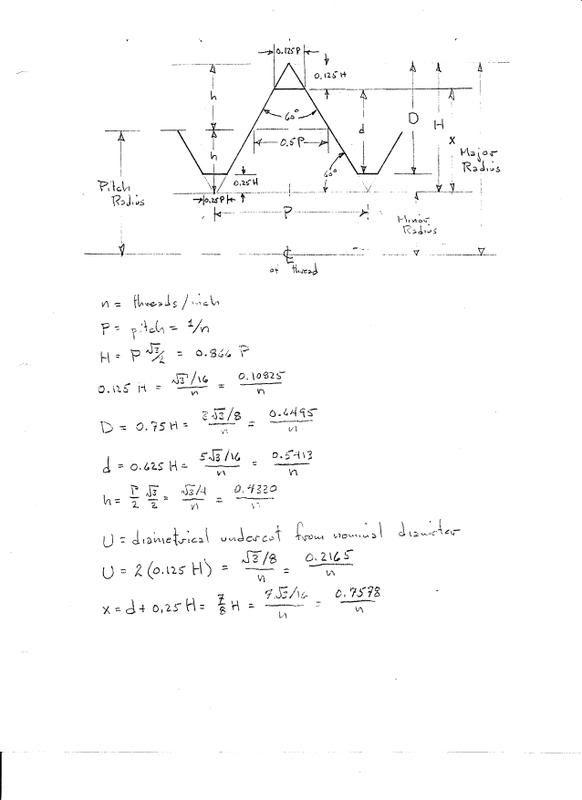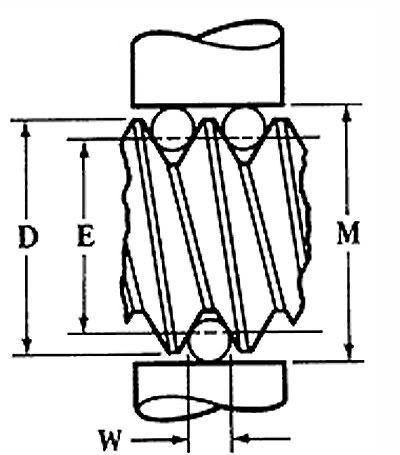Very impressive! ;D I tend to just sneak a peek in one of my books!
One thing to keep in mind with threads... hobbyists tend to work to precisions that are often unnecessary, and worse, often make final assembly more difficult than it needs to be. I am guilty of one thing in particular - If I am connecting two pieces with, say, several 6-32 screws in a pattern, I'll lay them out normally, drill and tap the one piece, then with the other (requiring unthreaded clearance holes), I'll mike the connectors, and then grab the next larger wire-sized drill in my box. This tends to create problems, as the clearance between the screws and the through-holes can make alignment and final assembly difficult. I then have to open them up further to successfully put it together.
My point is that it is a known fact that the screw body itself will usually fail long before the threaded interface, so long as you have an adequate depth. I like to make life easier in this case by doing as Mike mentions, mentally taking off a certain amount for the OD blank, and for a 1/4" thread I'd go right away to 0.245" or less. Even one of 0.240" will be plenty strong, although a bit sloppy going on. It also makes using a die easier, if that's your plan.
But if the thread is for something like a needle valve, or some other important operation, then I will tend to take a bit more care and time on it.







